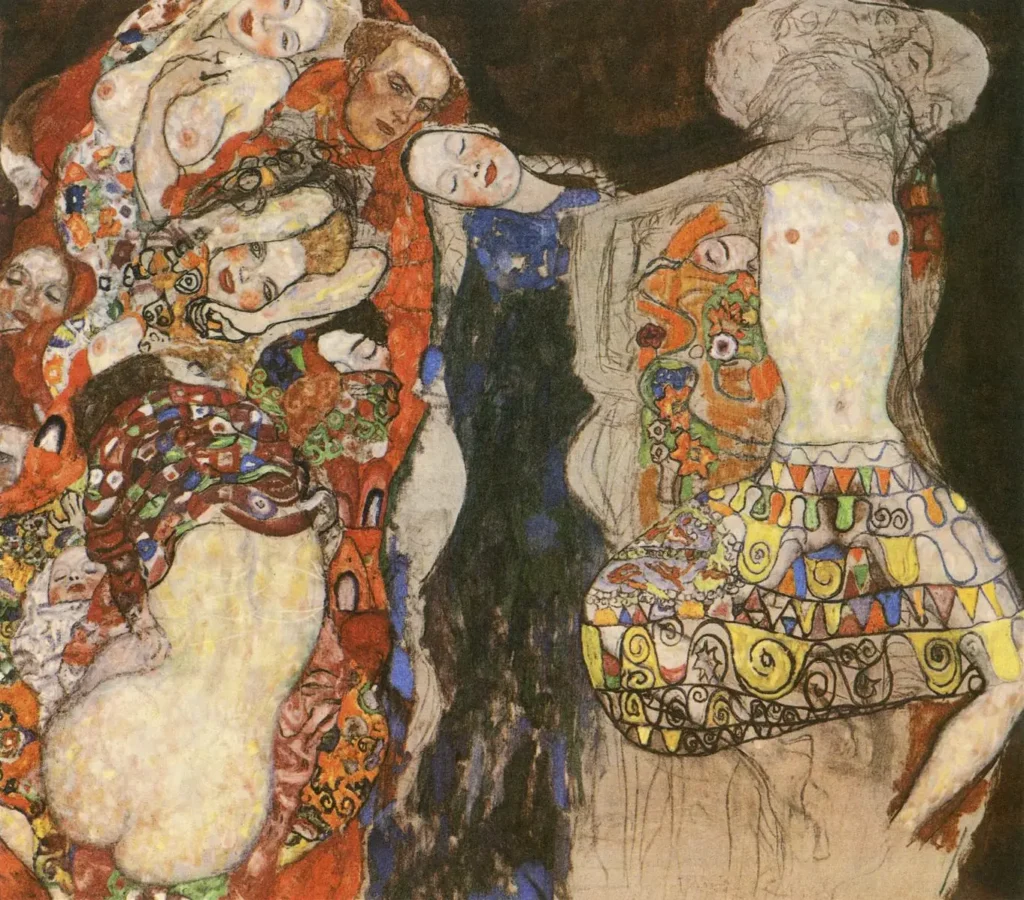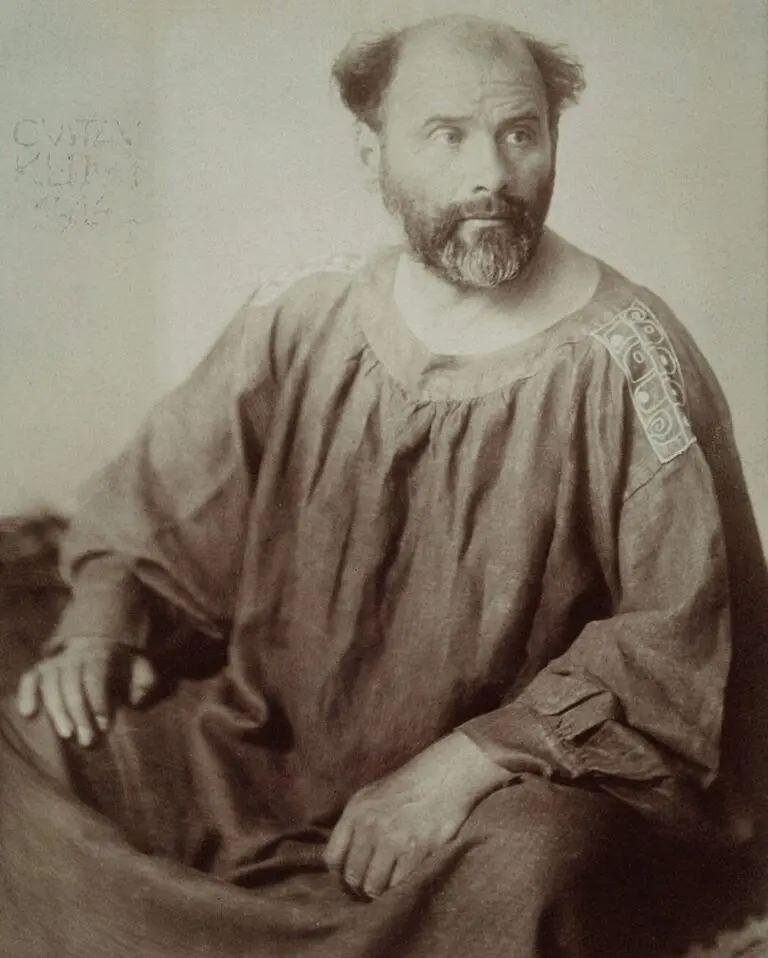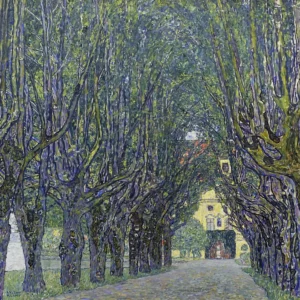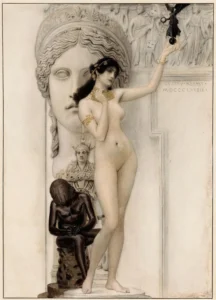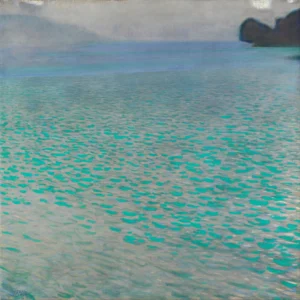The Bride (1917–1918)
The Bride is an unfinished masterpiece by Gustav Klimt, created during the last years of his life. This intricate composition features multiple figures, including the central bride with her ethereal oval face and long braids, surrounded by a vivid and symbolic environment. The work exemplifies Klimt's fascination with the female form and luxurious ornamentation, showcasing his unique approach by leaving parts of the canvas bare and unpainted. The painting reflects a lighter, celebratory tone compared to his earlier oeuvre, perhaps influenced by the tumultuous context of World War I.
1917 - 1918
About the Artwork
The story of The Bride is one steeped in emotion and the exploration of artistic evolution. Created between 1917 and 1918, the painting was left unfinished at the time of Klimt's death from pneumonia in February 1918. Reflecting his late style, the artwork carries a juxtaposition of intimacy and abstraction, with its celebratory portrayal of femininity contrasting sharply with darker themes from his earlier works. Klimt utilized an innovative technique of working directly on a bare canvas, allowing for an unfiltered exploration of his subjects. Following his passing, the painting was bequeathed to Emilie Flöge, marking a personal connection that transcends its artistic value. Today, The Bride remains a vital reference point for Klimt's contributions to modern art.
Did You Know
Liked what you see? Add it to your collection.
Enjoyed reading? Share it.
... continued
Creation and Context
The painting was created between 1917 and 1918, during Klimt's late creative period. It remained unfinished when Klimt died in February 1918 due to complications from pneumonia.
Composition and Style
The Bride is characterized by its dense and complex composition, featuring multiple figures, including six women, a sleeping baby, and a man in an orange garment with a monastic hairstyle. The central figure is the bride, depicted with an oval face, closed eyes, and long plaits, submerged in an abstract blue silhouette of an unfinished dress. The painting shows early Expressionist and oriental influences, typical of Klimt's later work, which often incorporated elements from Byzantine mosaics, Celtic design, and Oriental textiles and ceramics.
Unfinished State
The right half of the painting is dominated by a semi-naked female figure with her knees bent and legs splayed, exposing a detailed pubic area. Klimt had begun to paint an overlay of suggestive and symbolic ornamental shapes over this area. The painting reveals Klimt's working method, where he worked directly on a bare canvas without underpaint, often completing faces before surrounding sections.
Significance and Interpretation
The Bride is notable for its celebratory depiction of sex, lacking the dark and menacing qualities present in much of Klimt's earlier work. This shift may reflect his changing attitudes or a reaction to the horrors of World War I. The painting also highlights Klimt's fascination with the female form and his ability to make his subjects look glamorous while incorporating luxuriant decoration filled with meaning.
Ownership and Legacy
After Klimt's death, the painting was first owned by Emilie Flöge, a close friend and confidante of the artist. It is now part of a collection that showcases Klimt's unfinished works, providing insights into his creative process.




